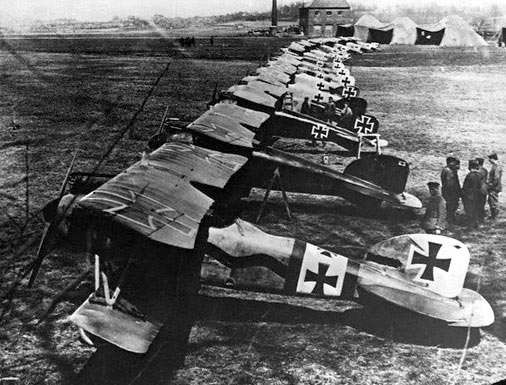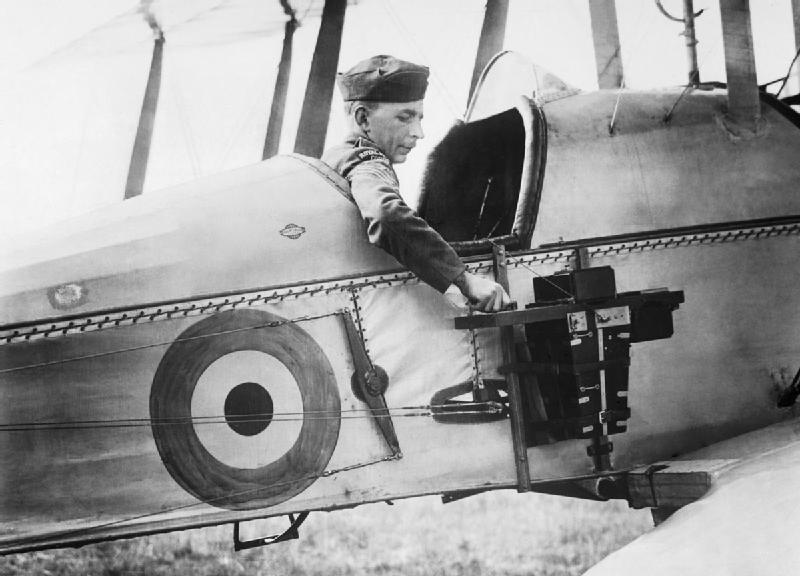Aerial Warfare in World War I
By on May 29th 2017
This Memorial Day, we're remembering all those who have bravely fought for our freedom. The sacrifices soldiers make and have made is something that we will never forget.
These soldiers made our country what it is today-the land of the free and home of the brave.
Some of these soldiers fought on land while others fought in the sky. In memory of all that our soldiers have done over the years, we're taking a look at the beginning of aerial warfare.
A Brief Overview of WWI Aerial Warfare
World War I was the first time aircraft were used in war on a large-scale. Prior to that, surveying was done using kites and balloons. Still, it wasn't until the end of the war that airplanes were utilized as aviation made rapid technological progress during this period, laying the foundation for aerial warfare.
 At first, officers on both sides of the war were unsure about utilizing planes in the war. In fear of using airplanes to attack undefended cities, a legislation was proposed in 1911 to limit the use of airplanes as weapons. Soon though, generals realized that aircraft could be used to locate the enemy, so planes were initially used for observational missions. But aircraft were evolving quickly during this time and the possibilities became reality just as rapidly.
At first, officers on both sides of the war were unsure about utilizing planes in the war. In fear of using airplanes to attack undefended cities, a legislation was proposed in 1911 to limit the use of airplanes as weapons. Soon though, generals realized that aircraft could be used to locate the enemy, so planes were initially used for observational missions. But aircraft were evolving quickly during this time and the possibilities became reality just as rapidly.
In 1915, aircraft manufacturer Anthony Fokker greatly improved the French invention of firing a machine gun through a plane's propeller, sending aerial warfare into action. With that, fighter planes were born.
-The day has passed when armies on the ground or navies on the sea can be the arbiter of a nation's destiny in war. The main power of defense and the power of initiative against an enemy has passed to the air.- - Billy Mitchell, 1918 Brigadier General
The use of airplanes spread throughout both sides of the war and the British Royal Flying Corps expanded. The Germans began strategic bombing efforts targeting logistic centers, manufacturing centers, ports, and factories, leading to civilian casualties.
On the other hand, allies dropped propaganda leaflets around France, Belgium, and Italy from 1915 through 1918 while demoralizing propaganda was dropped on German soldiers.
Aircraft could only carry a small bomb load during this time, but these methods were used during WWI as was the practice of throwing grenades and even grappling hooks at the enemy. Fighter pilots became known as -aces- when they reached five or more aerial casualties and victories. By the end of the war, there were over 1,800 soldiers who became known as aces.
Aerial Reconnaissance and Photography Efforts
As things in the airplane world were relatively new during WWI, efforts were largely focused on utilizing aircraft as a means of tracking the enemy and documenting the war.
These tracking missions involved a pilot and passenger who would act as the observer who would sometimes bomb enemy supply bases. These aircraft flew close to the ground and rather slowly, so many lost their lives on these missions due to enemy fire.
 Military aerial photography began at the end of 1911. At this time, tethered balloons and kites were used for surveying purposes, but they were easily shot down as they only traveled one mile above ground.
Military aerial photography began at the end of 1911. At this time, tethered balloons and kites were used for surveying purposes, but they were easily shot down as they only traveled one mile above ground.
Heavy cameras proved problematic for airplanes and smaller cameras didn't provide the quality and results they needed. However, over time camera technology improved and they began using longer lenses and began to fly higher for protection.
Germany boasted more advanced science at the time and adopted the first aerial camera with Austria-Hungary following. The French incorporated cameras in their planes from the beginning of the war. In fact, they developed practices to deliver prints to field commanders quickly while the British developed heavier-than-air photography units.
The United States used French aircraft and modified cameras, developing civilian surveying techniques and equipment towards the end of the war.
While there was resistance in using aircraft during the war, all parties quickly began to realize the importance aircraft played in the war and technology and techniques have evolved a great deal over the years.
For more, check out A Brief History of Early Aerial Warfare!
Sources:
https://en.wikipedia.org/wiki/Aviation_in_World_War_I
https://www.bl.uk/world-war-one/articles/aerial-warfare-during-world-war-one
https://en.wikipedia.org/wiki/Aerial_reconnaissance_in_World_War_I







